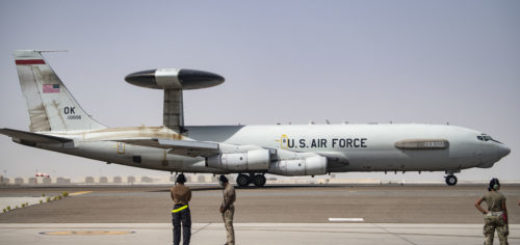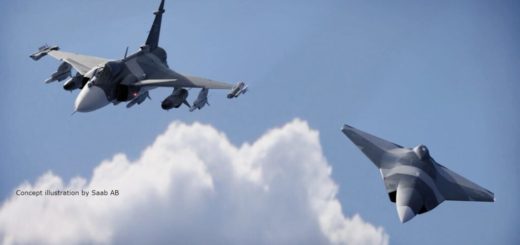Australia strengthens Indo-Pacific surveillance with new MQ-4C Triton drones
{loadposition bannertop}
{loadposition sidebarpub}
Northrop Grumman announced on August 19, 2025, via its official X account, the delivery of two new MQ-4C Triton drones to the Royal Australian Air Force, bringing its fleet to three aircraft. The Australian Department of Defence confirmed the information on August 9 on its own account, stating that the drones had joined RAAF Base Tindal in the Northern Territory after a transfer carried out in May. Remotely piloted from the U.S. Naval Air Station Patuxent River in Maryland, the aircraft completed a trans-Pacific flight with several technical stopovers before landing in Australia.Follow Army Recognition on Google News at this link
The MQ-4C Triton is a high-altitude, long-endurance (HALE) drone capable of flying above 50,000 feet for more than 24 hours, with a range of 7,400 nautical miles. (Picture source: Australian MoD)
Australia has ordered a total of four Tritons, acquired through Letters of Offer and Acceptance agreements with Washington. The program aims to strengthen persistent maritime surveillance and complement manned capabilities, particularly the P-8A Poseidon, to provide enhanced awareness of the country’s maritime approaches. The fourth aircraft is currently in production and is scheduled for delivery in 2028.
The MQ-4C Triton is a high-altitude, long-endurance (HALE) drone capable of flying above 50,000 feet for more than 24 hours, with a range of 7,400 nautical miles. Based on the RQ-4B Global Hawk, it has been adapted with reinforced wings, de-icing systems, and a collision-avoidance radar to operate in diverse environments. Its MFAS (Multi-Function Active Sensor) radar provides 360-degree coverage, enabling the detection, tracking, and classification of maritime targets, while producing high-resolution imagery through SAR (Synthetic Aperture Radar) and ISAR (Inverse Synthetic Aperture Radar) modes.
The platform is also equipped with an electro-optical/infrared sensor, an ESM (Electronic Support Measures) system to detect and geolocate enemy radar emissions, and an AIS (Automatic Identification System) receiver for tracking cooperative vessels. The data collected is transmitted in near real-time via direct or satellite links, providing naval forces and command centers with a continuous stream of intelligence. Already operated by the U.S. Navy, which has around 30 units, the Triton is designed to sustain up to five continuous reconnaissance orbits worldwide.
Australia employs the MQ-4C Triton primarily for persistent maritime surveillance and intelligence collection across its vast maritime approaches. Operating at altitudes above 50,000 feet for over 24 hours, the Triton provides wide-area coverage that enables the Royal Australian Air Force to monitor sea lanes, track vessels, and detect potential threats far from the continent. Its advanced sensor suite, including the Multi-Function Active Sensor (MFAS) radar, electro-optical/infrared cameras, electronic support measures, and an Automatic Identification System receiver, allows it to identify, classify, and geolocate maritime targets while transmitting real-time intelligence to Australian and allied forces.
The Triton complements Australia’s fleet of P-8A Poseidon aircraft, forming a “family of systems” that combines the unmanned platform’s long endurance with the Poseidon’s strike and anti-submarine capabilities. Together, they enhance national and regional security by providing continuous maritime domain awareness, supporting surface warfare and search-and-rescue missions, and strengthening cooperation with the United States. In this role, the MQ-4C Triton represents a strategic asset for Australia’s defense posture in the Indo-Pacific, enabling sustained vigilance in a region of increasing geopolitical competition.
According to Air Force Chief of Staff Air Marshal Stephen Chappell, the arrival of these drones marks a major milestone in the development of the nation’s persistent surveillance capabilities and reflects the success of the cooperation with the United States and Northrop Grumman.

{loadposition bannertop}
{loadposition sidebarpub}
Northrop Grumman announced on August 19, 2025, via its official X account, the delivery of two new MQ-4C Triton drones to the Royal Australian Air Force, bringing its fleet to three aircraft. The Australian Department of Defence confirmed the information on August 9 on its own account, stating that the drones had joined RAAF Base Tindal in the Northern Territory after a transfer carried out in May. Remotely piloted from the U.S. Naval Air Station Patuxent River in Maryland, the aircraft completed a trans-Pacific flight with several technical stopovers before landing in Australia.
Follow Army Recognition on Google News at this link
The MQ-4C Triton is a high-altitude, long-endurance (HALE) drone capable of flying above 50,000 feet for more than 24 hours, with a range of 7,400 nautical miles. (Picture source: Australian MoD)
Australia has ordered a total of four Tritons, acquired through Letters of Offer and Acceptance agreements with Washington. The program aims to strengthen persistent maritime surveillance and complement manned capabilities, particularly the P-8A Poseidon, to provide enhanced awareness of the country’s maritime approaches. The fourth aircraft is currently in production and is scheduled for delivery in 2028.
The MQ-4C Triton is a high-altitude, long-endurance (HALE) drone capable of flying above 50,000 feet for more than 24 hours, with a range of 7,400 nautical miles. Based on the RQ-4B Global Hawk, it has been adapted with reinforced wings, de-icing systems, and a collision-avoidance radar to operate in diverse environments. Its MFAS (Multi-Function Active Sensor) radar provides 360-degree coverage, enabling the detection, tracking, and classification of maritime targets, while producing high-resolution imagery through SAR (Synthetic Aperture Radar) and ISAR (Inverse Synthetic Aperture Radar) modes.
The platform is also equipped with an electro-optical/infrared sensor, an ESM (Electronic Support Measures) system to detect and geolocate enemy radar emissions, and an AIS (Automatic Identification System) receiver for tracking cooperative vessels. The data collected is transmitted in near real-time via direct or satellite links, providing naval forces and command centers with a continuous stream of intelligence. Already operated by the U.S. Navy, which has around 30 units, the Triton is designed to sustain up to five continuous reconnaissance orbits worldwide.
Australia employs the MQ-4C Triton primarily for persistent maritime surveillance and intelligence collection across its vast maritime approaches. Operating at altitudes above 50,000 feet for over 24 hours, the Triton provides wide-area coverage that enables the Royal Australian Air Force to monitor sea lanes, track vessels, and detect potential threats far from the continent. Its advanced sensor suite, including the Multi-Function Active Sensor (MFAS) radar, electro-optical/infrared cameras, electronic support measures, and an Automatic Identification System receiver, allows it to identify, classify, and geolocate maritime targets while transmitting real-time intelligence to Australian and allied forces.
The Triton complements Australia’s fleet of P-8A Poseidon aircraft, forming a “family of systems” that combines the unmanned platform’s long endurance with the Poseidon’s strike and anti-submarine capabilities. Together, they enhance national and regional security by providing continuous maritime domain awareness, supporting surface warfare and search-and-rescue missions, and strengthening cooperation with the United States. In this role, the MQ-4C Triton represents a strategic asset for Australia’s defense posture in the Indo-Pacific, enabling sustained vigilance in a region of increasing geopolitical competition.
According to Air Force Chief of Staff Air Marshal Stephen Chappell, the arrival of these drones marks a major milestone in the development of the nation’s persistent surveillance capabilities and reflects the success of the cooperation with the United States and Northrop Grumman.






